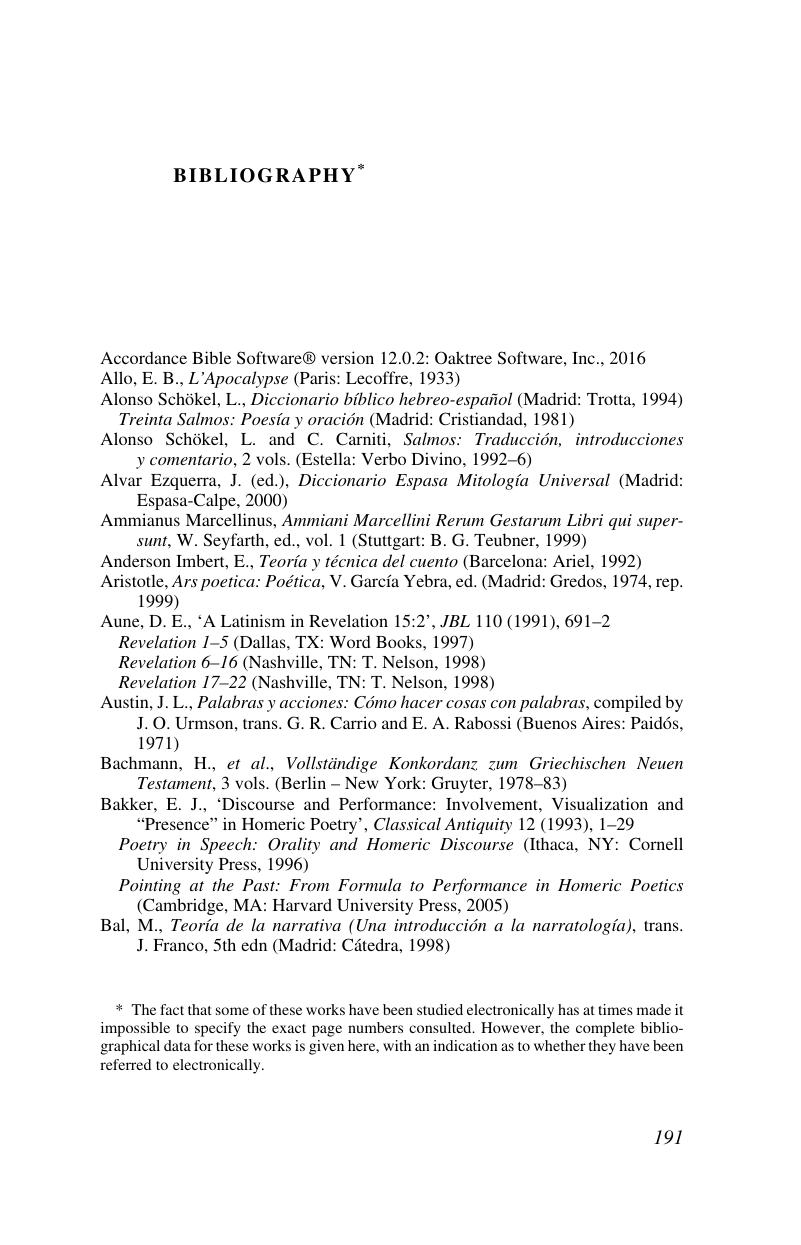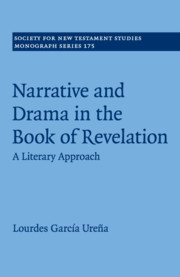Book contents
- Narrative and Drama in the Book of Revelation
- Society for New Testament Studies:
- Narrative and Drama in the Book of Revelation
- Copyright page
- Dedication
- Contents
- Tables
- Preface
- Abbreviations
- Introduction
- 1 The Literary Forms of the Book of Revelation
- 2 John, Eyewitness and Herald of the Visions
- 3 John, Auditory Witness and Herald of the Word
- Epilogue
- Bibliography
- Index of Ancient Sources
- Subject Index
- References
Bibliography
Published online by Cambridge University Press: 15 August 2019
- Narrative and Drama in the Book of Revelation
- Society for New Testament Studies:
- Narrative and Drama in the Book of Revelation
- Copyright page
- Dedication
- Contents
- Tables
- Preface
- Abbreviations
- Introduction
- 1 The Literary Forms of the Book of Revelation
- 2 John, Eyewitness and Herald of the Visions
- 3 John, Auditory Witness and Herald of the Word
- Epilogue
- Bibliography
- Index of Ancient Sources
- Subject Index
- References
Summary

- Type
- Chapter
- Information
- Narrative and Drama in the Book of RevelationA Literary Approach, pp. 191 - 201Publisher: Cambridge University PressPrint publication year: 2019



